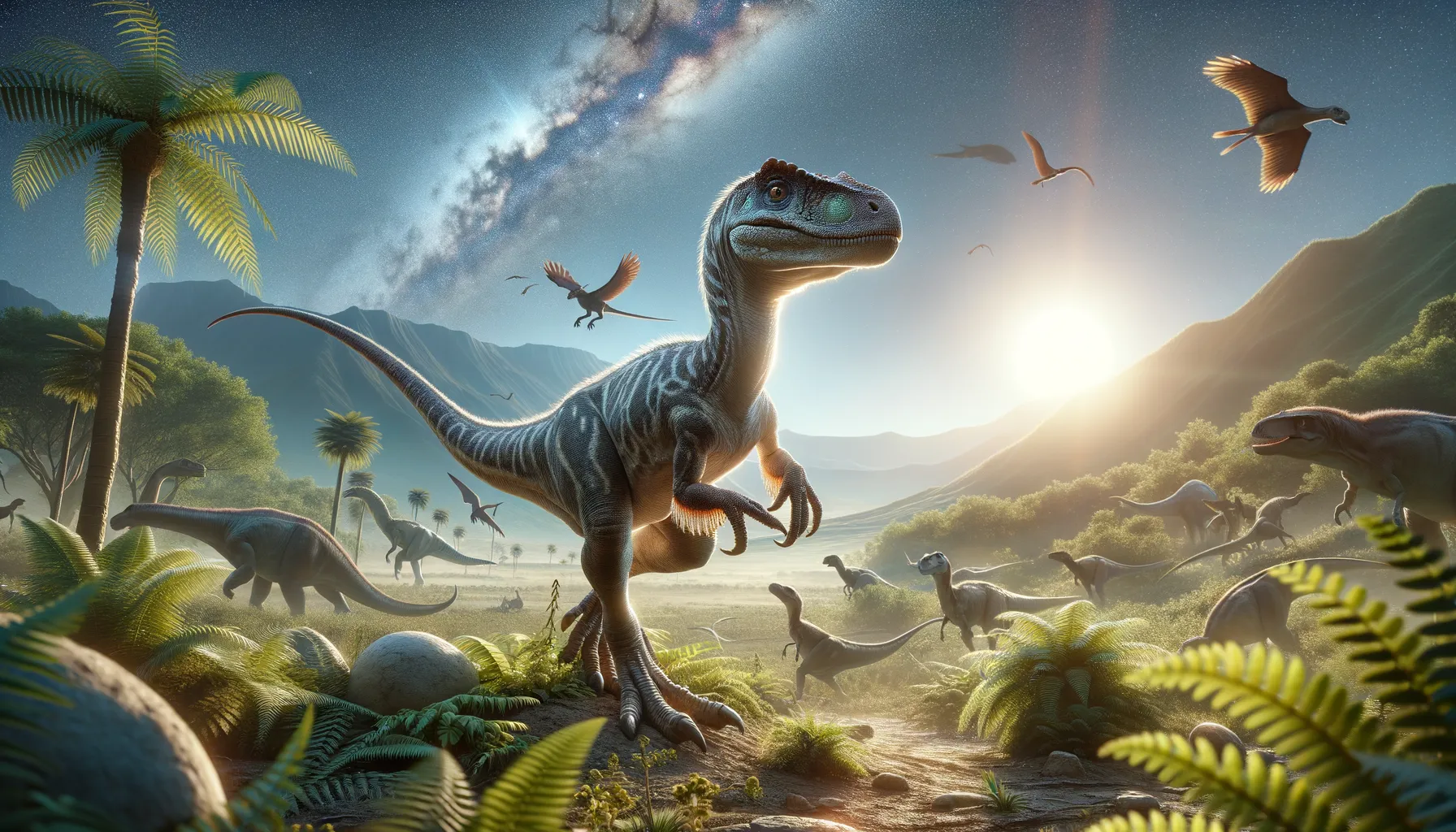
Xiyunykus
Bridging the gap to modern birds.
Period
Cretaceous
Length
Approximately 1.5 meters long.
Height
About 1 meter tall.
Weight
Approximately 50 kilograms.
Xiyunykus is a fascinating theropod dinosaur known for its transitional features between non-avian dinosaurs and birds. It was a relatively small dinosaur, which showcases the diversity during the Upper Cretaceous period. This dinosaur helps in understanding the evolutionary steps that led to the development of modern birds, making it an important species for paleontologists studying the origins of avian features.
Diet
Xiyunykus likely had an omnivorous diet, feeding on a variety of plants and small animals. Its teeth suggest it could handle different types of food, making it adaptable to changes in its environment.
Hunting
With its omnivorous diet, Xiyunykus would scavenge the forest floor for insects and small vertebrates. It was not a top predator, relying on stealth and quickness to find its meals.
Environmental challenges
Xiyunykus faced challenges such as seasonal droughts and changing vegetation in its habitat. Competition from other species and predators also posed significant threats. The Cretaceous period was a time of great change, demanding adaptability and resilience from all species.
Speed
Moderate, not built for high speed due to its size.
Lifespan
Estimated to live around 10-20 years.
First discovery
Discovered in the Gobi Desert of China.
Fun Facts
- Xiyunykus is a type of theropod dinosaur, which means it shares a common ancestor with the mighty Tyrannosaurus rex.
- It lived around 99 million years ago during the Late Cretaceous period, a time when dinosaurs were thriving.
- Xiyunykus was quite small compared to many of its theropod relatives, making it more of a nimble little creature than a gigantic predator.
- Rather than being a fierce carnivore, it is believed to have been omnivorous or herbivorous, munching on plants, insects, and small animals.
- The discovery of Xiyunykus has helped scientists better understand the transition of certain theropods to becoming modern birds.
- Xiyunykus was found in what is now China, a region rich with many intriguing dinosaur fossils.
- Its long legs suggest it was a fast runner, possibly helping it to escape predators or catch its prey.
Growth and Development
Young Xiyunykus would likely rely on hiding and speed to escape predators as they grew. Growth rate would have been rapid in the early stages to reach a size that lessened vulnerability. Development of features linking it to birds likely began early.
Habitat
Xiyunykus lived in forested areas with plenty of vegetation. The environment would have been warm, with seasonal changes impacting available resources. It had to navigate the complex forest floor and trees in search of food and safety.
Interaction with other species
Xiyunykus shared its habitat with other small dinosaurs and mammals, potentially competing for similar resources. Larger predators would have been a constant threat, necessitating vigilance and adaptability. Symbiotic relationships with plants and smaller creatures were likely.
Natural lifespan
Xiyunykus could live naturally around 10-20 years in the wild.
Reproduction
Xiyunykus would have laid eggs, likely in ground nests hidden from predators. Parental care might have been limited to nest guarding, common among non-avian dinosaurs. Clutches would contain several eggs, balancing offspring survival rates.
Social behaviour
Xiyunykus may have lived in small groups or pairs, offering protection from predators. Social interactions would have revolved around foraging and mating. Group living could enhance survival through shared vigilance and resource location.
Fossil locations
Fossils of Xiyunykus were predominantly found in the Gobi Desert, providing insight into its biodiversity. These locations are rich in other dinosaur fossils, indicating a once-diverse ecosystem. Fossil discoveries continue to enhance understanding of its evolutionary significance.
